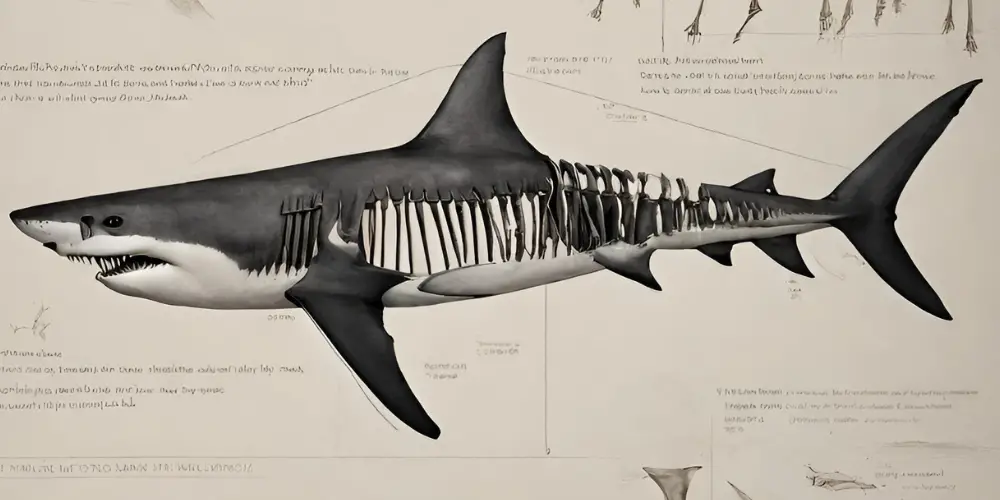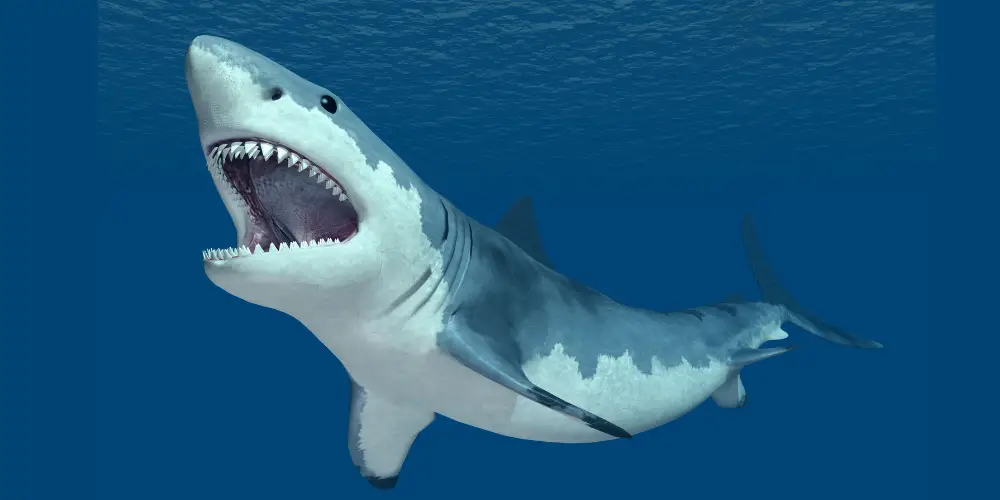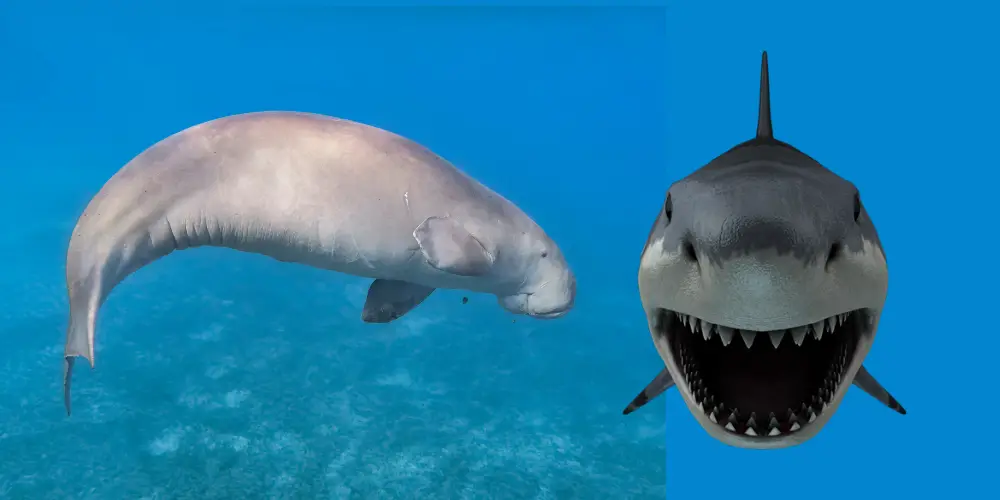Sharks, the majestic predators of the deep, have intrigued and mystified humans for centuries.
A common query that arises is about the anatomy of these fascinating creatures. Specifically, do sharks have bones?
Sharks do not have bones. They possess a skeleton made entirely of cartilage, a flexible and lightweight material, allowing them to be agile and swift in the water. This cartilaginous skeleton is a key adaptation to their marine environment, aiding in buoyancy and efficient predation.
This article delves deep into the mysteries of shark anatomy, dispelling myths and providing enlightening facts about their skeletal structure.
Key Takeaways
- Sharks possess a cartilaginous skeleton, contrasting with the bony skeletons of many other fish species.
- The cartilaginous skeleton gives sharks strength and flexibility, aiding their navigation through various oceanic environments.
- Sharks’ lightweight cartilage and large livers filled with low-density oils are crucial adaptations for maintaining buoyancy in aquatic environments.
- The absence of heavy bones in sharks contributes to their remarkable speed and agility, establishing them as formidable predators in the ocean.
- Sharks exhibit a unique swimming mechanism, utilizing their muscular system and flexible spine to generate thrust and cover vast distances.
- Variations in skeletal structures among different shark species reflect their adaptations to specific ecological niches and environmental needs.
- Sharks’ jaws, composed of tough, flexible cartilage, enable a powerful bite force and a wide range of motion, integral to their predatory lifestyle.
- Shark teeth are not bones but are composed of dentin and coated in enamel, contributing to their robustness.
- The cartilaginous nature of shark skeletons poses challenges for fossilization, but well-preserved fossils offer insights into ancient shark species.
- Research into the unique properties of shark cartilage has potential applications in human medicine, including treatments for arthritis and cancer.
- The study of sharks enhances our understanding of marine biology, ecology, and conservation efforts for marine biodiversity and ecosystems.
- Sharks’ adaptations, including their cartilaginous skeletons, allow them to thrive in diverse marine environments, offering insights into the intricate marine life.
Shark Anatomy and Skeletal Structure
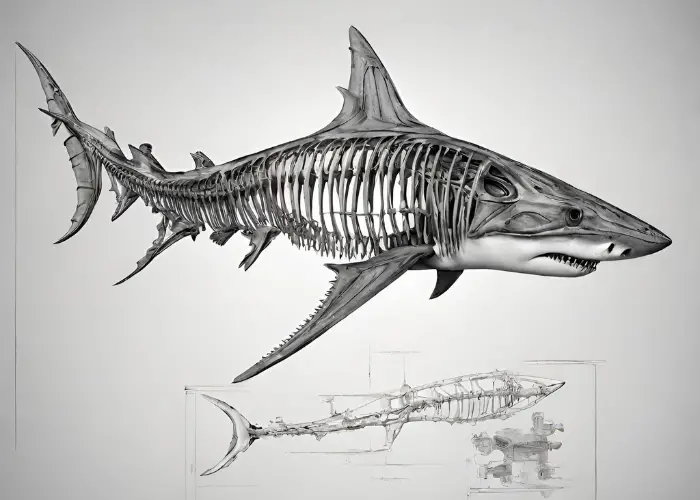
Cartilaginous Skeletons
Sharks are remarkable for their skeletal structure, made entirely of cartilaginous tissues, starkly contrasting to the bony skeletons of many other fish species.
This unique composition grants them strength and flexibility, allowing them to navigate the ocean depths with unparalleled grace.
Comparison with Bony Fish
| Feature | Bony Fish | Sharks |
|---|---|---|
| Skeletal Structure | Rigid Skeletons made of Bone | Cartilaginous Skeletons |
| Function | Provides support | Allows swift maneuver through the water |
| Advantage | Stability | Flexibility and speed, avoiding predators |
| Adaptation | Suited to a variety of aquatic environments | Adapted to diverse marine ecosystems |
Functional Advantages of Cartilage in Sharks
- Reduced Weight: The cartilaginous skeleton is lighter than a bony one, aiding buoyancy.
- Enhanced Flexibility: Allows for efficient movement and maneuverability in water.
- Habitat Diversity: Enables sharks to inhabit various marine ecosystems, from shallow coastal waters to the abyssal depths of the ocean.
- Predatory Advantage: The flexibility and reduced weight aid in capturing prey and avoiding predators.
Buoyancy and Movement
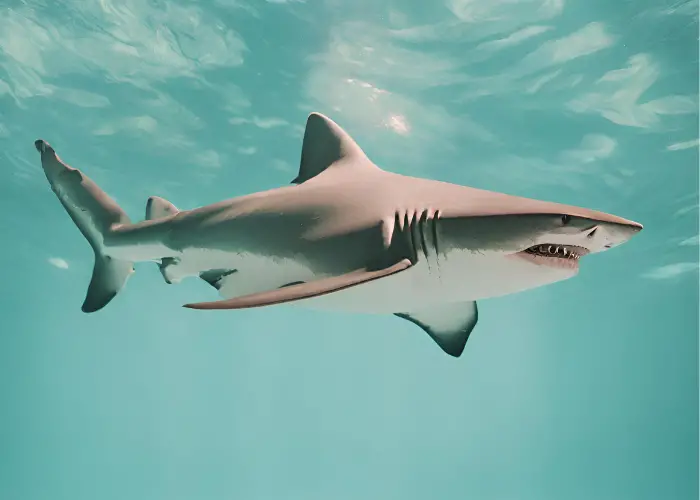
Role of Cartilage in Buoyancy
Sharks utilize their lightweight cartilage to maintain buoyancy, a crucial adaptation for survival in the aquatic environment.
This feature, coupled with their large livers filled with low-density oils, prevents them from sinking and allows them to conserve energy while swimming.
Impact on Speed and Agility
The absence of heavy bones enables sharks to achieve remarkable speed and agility, making them formidable predators.
Their streamlined bodies and powerful muscles work with their lightweight skeletons to propel them through the water with minimal effort.
Sharks’ Unique Swimming Mechanism
Sharks employ a distinctive swimming mechanism, relying on their muscular system and flexible spine to generate thrust.
This adaptation allows them to cover vast distances for food and suitable habitats, enhancing their role as apex predators in various marine ecosystems.
Diversity in Shark Species
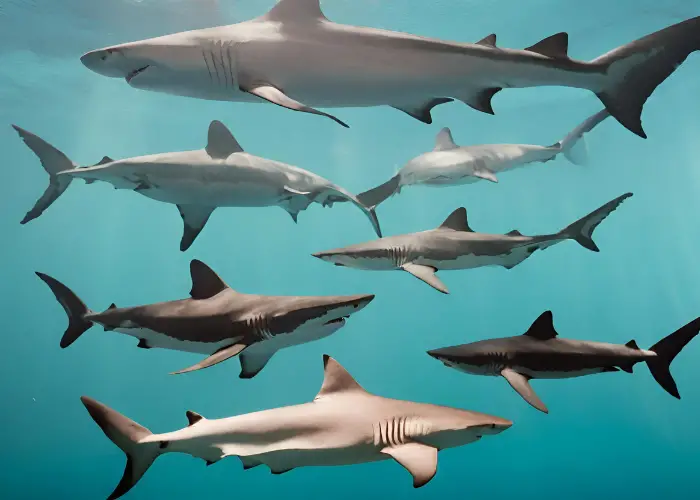
Variations in Skeletal Structures
Different shark species exhibit variations in their skeletal structures, reflecting adaptations to their specific ecological niches.
For example, some sharks have unique head shapes due to their environmental needs and feeding habits.
Adaptations Across Species
Each shark species has developed unique adaptations to thrive in its environment.
Some species, like the nurse shark, have specialized teeth capable of crushing the shells of crustaceans, while others, like the great white shark, have razor-sharp teeth designed for shearing through flesh.
Sharks’ Jaws and Teeth

Composition of Shark Jaws
Sharks’ jaws are a marvel of nature, not composed of bone but of tough, flexible cartilage, allowing for an impressive range of motion and powerful bite force.
This unique composition is integral to their predatory lifestyle, enabling them to capture and consume diverse prey.
Are Shark Teeth Bones?
Shark teeth, while not bones, are composed of dentin, a hard tissue, and are coated in enamel, making them incredibly robust.
Discover more about the fascinating composition and function of shark teeth and how they contribute to sharks’ status as apex predators of the ocean.
Fossilization and Preservation
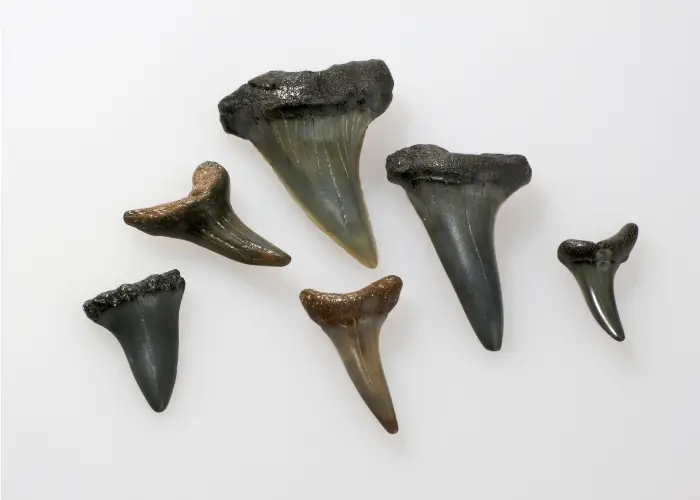
Challenges in Shark Fossilization
The cartilaginous nature of shark skeletons poses significant challenges for fossilization, as cartilage is less durable and more prone to decomposition than bone.
However, discovering well-preserved shark fossils provides invaluable insights into the ancient species and their life histories.
Discoveries of Shark Fossils
Numerous shark fossil discoveries have shed light on the diverse species that once inhabited the oceans. It reveals adaptations and features that have enabled sharks to survive and thrive in the ever-changing marine environment.
Medical and Scientific Research
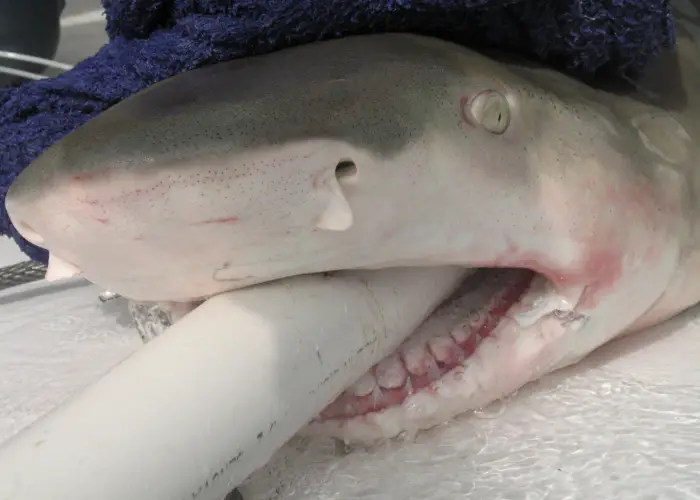
Sharks in Medical Research
The unique properties of shark cartilage have sparked interest in the medical community, leading to research into its potential applications in human medicine, including treating conditions like arthritis and cancer.
Scientific Contributions
Studying sharks’ anatomy and physiology contributes to our broader understanding of marine biology and ecology.
It informs conservation efforts and enhances our knowledge of marine biodiversity and ecosystem dynamics.
Conclusion
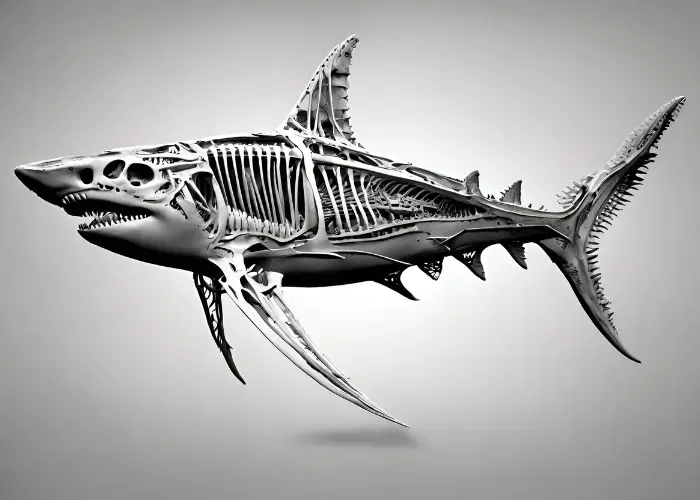
Exploring whether sharks have bones leads us to understand these fascinating marine predators better.
Their cartilaginous skeletons are a testament to the marvels of natural adaptation, allowing them to thrive in the diverse and dynamic marine environment.
By studying sharks, we gain insights into their world and the intricate tapestry of life beneath the waves.
More Shark Topics:
- For more insights into the intriguing world of sharks, explore how sharks socialize in various marine ecosystems.
- Discover shark eyelids‘ fascinating composition and function and how they contribute to their predatory lifestyle.
- Learn more about shark tongues‘ unique and specialized anatomy and their role in feeding and sensing their environment.
- Uncover the mysteries of how sharks excrete waste through their skin, a unique adaptation to their marine habitat.
REFERENCES:
- Hawaiʻi Sharks. (2023, September 26). Skeleton & Buoyancy. Department of Land and Natural Resources. https://dlnr.hawaii.gov/sharks/anatomy/skeleton-and-buoyancy/
- University of California Museum of Paleontology. (2023, September 22). Introduction to the Chondrichthyes. UCMP Berkeley. https://ucmp.berkeley.edu/vertebrates/basalfish/chondrintro.html
- NOAA Fisheries. (2018, July 17). 12 Shark Facts That May Surprise You. National Oceanic and Atmospheric Administration. https://www.fisheries.noaa.gov/feature-story/12-shark-facts-may-surprise-you

